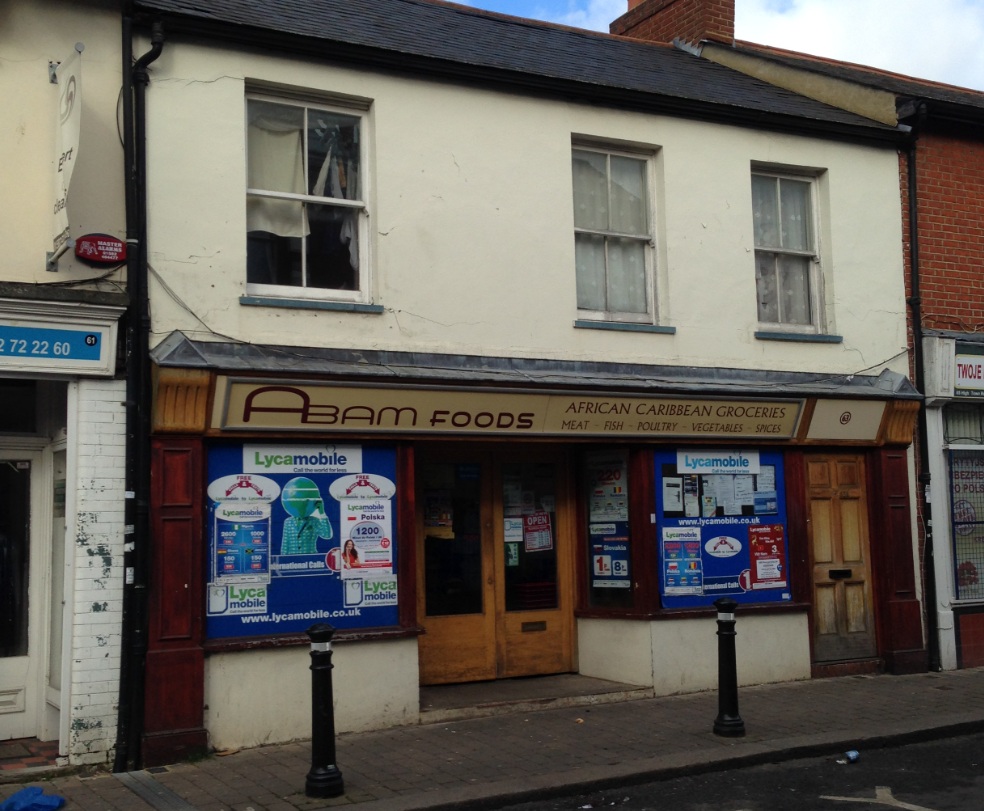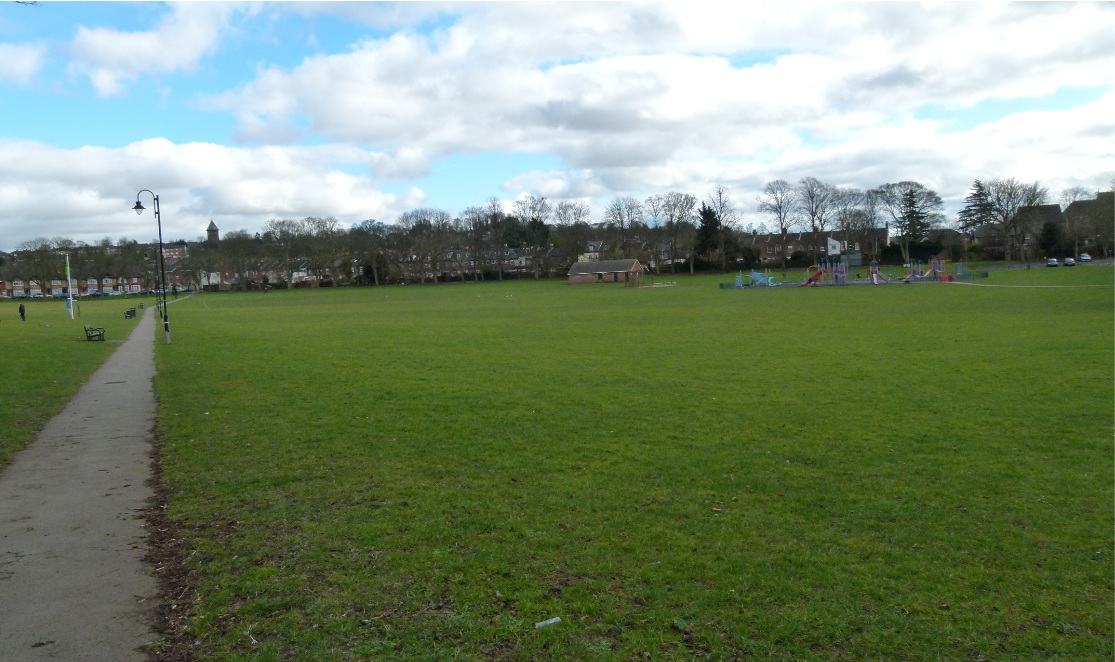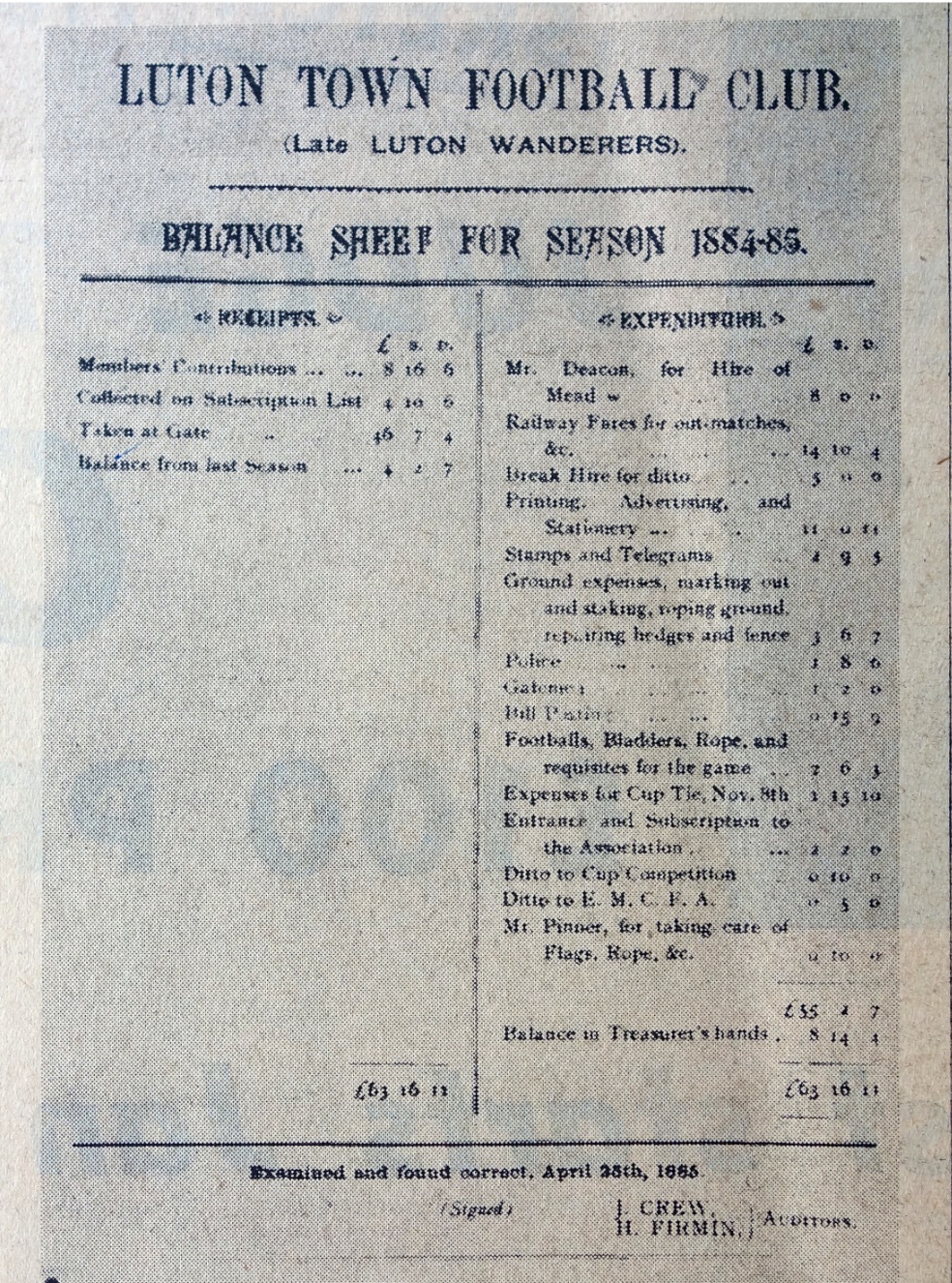grass roots - luton wanderers
By Brian Webb
Luton Wanderers were formed in September 1880 in the Cricketers Arms, High Town Road.

Above: The Cricketers Arms in 2015 (photo from Author's collection)
The Luton News of the 25th February 1926 reports as follows -
“The Wanderers’ Club was formed in September, 1880, at a meeting held at the 'Cricketer’s Arms,’ High Town-road. Its members were all working men, and paid a shilling entrance fee, and a subscription of twopence per week for the season. The first secretary was Mr J.H. Bennett, happily still with us, though he has passed the allotted span. Mr H.G. Spratley was the assistant secretary, and the affairs of the club were managed by a committee of five. The first playing members were T. Brooks, George Deacon, Albert Deacon, B. Barrett, J. Odell, George Smith, T. Veal, G. Abbott, W.H. Wheeler, Geo. Bennett, G. Clark and R. Ellingham. Messrs Odell, Wheeler and Veal have passed away, but the others, and several members of the Club, still survive.”
The fact that the club was formed in September, at the end of the cricket season suggests that the founders were cricketers who wanted a game during the winter months. The Town Cricket Club had their ground in People’s Park – what today is called Bell’s Close.
The Luton News of the 25th February 1926 reports as follows -
“The Wanderers’ Club was formed in September, 1880, at a meeting held at the 'Cricketer’s Arms,’ High Town-road. Its members were all working men, and paid a shilling entrance fee, and a subscription of twopence per week for the season. The first secretary was Mr J.H. Bennett, happily still with us, though he has passed the allotted span. Mr H.G. Spratley was the assistant secretary, and the affairs of the club were managed by a committee of five. The first playing members were T. Brooks, George Deacon, Albert Deacon, B. Barrett, J. Odell, George Smith, T. Veal, G. Abbott, W.H. Wheeler, Geo. Bennett, G. Clark and R. Ellingham. Messrs Odell, Wheeler and Veal have passed away, but the others, and several members of the Club, still survive.”
The fact that the club was formed in September, at the end of the cricket season suggests that the founders were cricketers who wanted a game during the winter months. The Town Cricket Club had their ground in People’s Park – what today is called Bell’s Close.

Above: Bell's Close taken from the Clarendon Road side. The cricket pitch used to be here (photo from author's collection)
Wanderers advertised for opponents in both Association and Rugby Football. It appears that they only played "Soccer" not “Rugger" but do not have a game reported in the newspapers until December 1881. That first game was against Excelsior which they won. They quickly developed into the best team in the town.
Wanderers position was strengthened by the arrival of the three Lomax brothers who were pupils at St. John’s College, New Bedford Road. In November 1883, two of the Lomax brothers, J.C. 19, and E.H. 17, made their debuts away to Hemel Hempstead who had not been beaten at home for three years. They came away with a magnificent 2 0 victory and Wanderers place as the premier club in the town was beyond question.
Wanderers began testing themselves against better opposition. They ended the 1883/84 season with a good win over London Excelsior, the Luton Reporter said -
“A grand match in the People’s Park on Saturday, between the above clubs, both of which put their strongest teams in the field, and, as the day was fine and the teams about equally matched, some exciting and very fast play was seen. The Excelsior scored a goal within a few minutes of the start, but the Wanderers’ retaliated at once with another, and, both sides scoring once more before half time, the game stood two each. When ends were changed, both sides tried hard to gain the winning point, the Wanderers with a few minutes of time being at last successful, putting the leather through, amid the cheers of hundreds of spectators, and thus wining very pleasant game (and the fastest one this season) by 3 goals to 2.”
Wanderers advertised for opponents in both Association and Rugby Football. It appears that they only played "Soccer" not “Rugger" but do not have a game reported in the newspapers until December 1881. That first game was against Excelsior which they won. They quickly developed into the best team in the town.
Wanderers position was strengthened by the arrival of the three Lomax brothers who were pupils at St. John’s College, New Bedford Road. In November 1883, two of the Lomax brothers, J.C. 19, and E.H. 17, made their debuts away to Hemel Hempstead who had not been beaten at home for three years. They came away with a magnificent 2 0 victory and Wanderers place as the premier club in the town was beyond question.
Wanderers began testing themselves against better opposition. They ended the 1883/84 season with a good win over London Excelsior, the Luton Reporter said -
“A grand match in the People’s Park on Saturday, between the above clubs, both of which put their strongest teams in the field, and, as the day was fine and the teams about equally matched, some exciting and very fast play was seen. The Excelsior scored a goal within a few minutes of the start, but the Wanderers’ retaliated at once with another, and, both sides scoring once more before half time, the game stood two each. When ends were changed, both sides tried hard to gain the winning point, the Wanderers with a few minutes of time being at last successful, putting the leather through, amid the cheers of hundreds of spectators, and thus wining very pleasant game (and the fastest one this season) by 3 goals to 2.”
Interlude - This player, likely a Wanderers player, wears a late 1870’s style jersey and knickers (short for knickerbockers) which would have been worn into the 1880’s. The shirt was known as striped even though it is hooped. Vertical striped shirts did not arrive until about 1883. His shin pads are worn outside his stockings. He wears an army stable belt. Sports manufacturers made these wide belts in club colours. Caps to match could also be purchased and it looks like this player has tucked his through his belt but it could be gloves.
The cost of his kit is as follows in old money – there were 20 shillings to a pound and 12 pennies to a shilling. Shilling = s. Pennies = d. 3/11 means:
3 shillings and 11 pennies.
Jersey 3/11
Knickers 5/11
Stockings 2/3
Cap to match 9 1/2d
Belt to match 10d
Shin Guards (special cork)
Chamois 1/11 or leather 2/11per pair.
Football boots 10/3
This player looks like he is wearing his everyday shoes for the photograph (photo from author's collection).
The cost of his kit is as follows in old money – there were 20 shillings to a pound and 12 pennies to a shilling. Shilling = s. Pennies = d. 3/11 means:
3 shillings and 11 pennies.
Jersey 3/11
Knickers 5/11
Stockings 2/3
Cap to match 9 1/2d
Belt to match 10d
Shin Guards (special cork)
Chamois 1/11 or leather 2/11per pair.
Football boots 10/3
This player looks like he is wearing his everyday shoes for the photograph (photo from author's collection).

Wanderers player and long time assistant secretary, Herbert Spratley, became Secretary in the Summer of 1884. He was ambitious and entered Wanderers into the F.A. Cup so becoming the first team from the town to play in the competition. They hit the jackpot when they drew the twice winners of the F.A. Cup, the Old Etonians at home. However, their ground was on Bell’s Close, a public park so they could not charge an admission. The tie would attract 2,000 fans so they moved next to the Excelsior ground in Dallow Lane. They lost 3 1 to the Old Etonians and it turned out to be the pinnacle of their power.
The downward trajectory began when in January 1885 Herbert Spratley and the committee changed the Wanderers name to “Luton Town.” The meeting was a secret one which annoyed most football lovers in the town. Additionally, although a “Town” club was needed, a mere name change did achieve the goal of having the best players in the town on the pitch. The name change lead to the events at the Town Hall on the 11th April 1885.
Olive branches were offered all round and many Wanderers players turned out for Luton Town in the first season, 1885/86 -
Barrett, H. Half back
Barrett, W. Forward
Deacon, A. Forward
Deacon, G. Forward
Ellingham, E. Forward
Ellingham, R. Forward
Humphrey, G. Goalkeeper
Knowles, T.B. Half back
Lomax, D.A.N. Utility player, back, half back and forward
Lomax, E.H. Half back
Lomax, J.C. Forward
Long, G. Goalkeeper
Long, J. Goalkeeper
Martin, A. Back
Read, T. Half back and goalkeeper
Scott, F. Half back
Smith, G. Forward
Wheeler, W. Forward
Widdocks. Half Back
Wright, E. Forward.
Olive branches were offered all round and many Wanderers players turned out for Luton Town in the first season, 1885/86 -
Barrett, H. Half back
Barrett, W. Forward
Deacon, A. Forward
Deacon, G. Forward
Ellingham, E. Forward
Ellingham, R. Forward
Humphrey, G. Goalkeeper
Knowles, T.B. Half back
Lomax, D.A.N. Utility player, back, half back and forward
Lomax, E.H. Half back
Lomax, J.C. Forward
Long, G. Goalkeeper
Long, J. Goalkeeper
Martin, A. Back
Read, T. Half back and goalkeeper
Scott, F. Half back
Smith, G. Forward
Wheeler, W. Forward
Widdocks. Half Back
Wright, E. Forward.

Wanderers entered the F.A. Cup again in 1885/86 and beat Chesham at Dallow Lane 3 2 in the first round. A short period of crowing over Luton Town, who had lost at Marlow, followed. However, the second round was an embarrassment as the 21st November saw the Luton Wanderers take on the Old Wykehamists who were the former pupils of Winchester College based in London. They were a strong team and played their home games at Kennington Oval - which had held every F.A. Cup Final since 1872 bar one. The report takes up the game;
“A most one sided game was witnessed at Kennington Oval London on Saturday afternoon, when these teams met in the second round of the English Challenge Cup competition. The Luton men this time met a team which was more than their match. Indeed from the first they had no hope of succeeding against a club so famous as the Old Wykehamists. As it proved the Luton players were worsted at every point, and their opponents gained a very easy victory by 10 goals to none, six being kicked in the first half, and four in the second”.
On 24th May 1886, Luton Wanderers held their last get together. From the Luton Reporter Newspaper -
“The annual supper of the above club was held at the Crown and Anchor Hotel on Monday evening. About 30 members and friends sat down to an excellent repast prepared by Mr and Mrs Stackhouse. After the supper a social evening was spent. Mr F. Pitkin was chosen as as Chairman, and Mr T. Brown occupied the vice-chair. The Chairman proposed the toast of the “Luton Wanderers Football Club” in appropriate terms, and Mr G. Smith seconded. The toast was drunk with great enthusiasm. Mr Bailey’s string band was in attendance, and songs were given by Messrs G. Smith, T. Brown, G. Humphrey, H.H. Kemp, W. Garrett, E. Fensome and G. Presland. During an interval letters were read from Mr C. Flowers M.P. and Councillor Spratley, accepting the vice-presidencies, but Mr. Furlong was obliged to decline. The “Host and Hostess” was proposed by Mr H.H. Kemp and Mr Humphrey seconded, and the toast was drunk with musical honours. About eleven o’clock the company separated after spending a very enjoyable evening”.
In January 1887 they failed to turn up to play Millwall to raise money for the local hospital. Millwall were furious and published a warning in the football press. In February, Wanderers visited Dunstable for whom their former secretary, Herbert Spratley played. The match ended early after a number of fights amongst the players and Luton Wanderers were no more.
Herbert Spratley would go on to play for Luton Town, mainly in the reserves.
